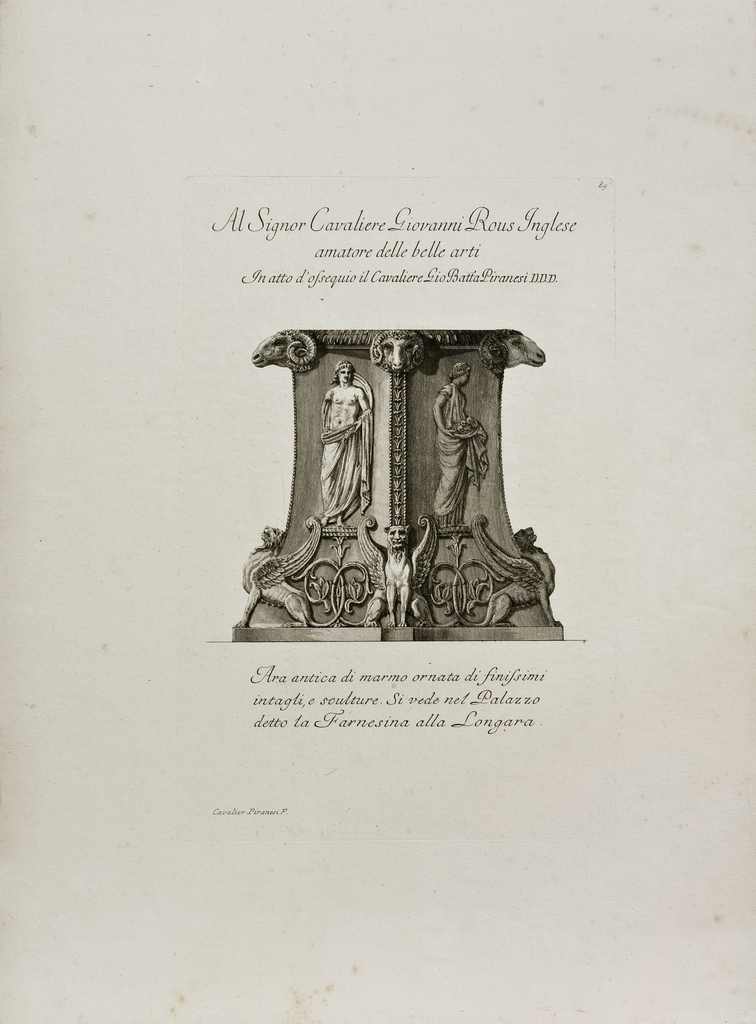- Title: Ara antica di marmo
- Author: Giovanni Battista Piranesi
- Date: 1778
- Medium: Copperplate engraving
- Condition: Excellent
- Inches: 17 1/4 x 24 [Paper]
- Centimeters: 43.82 x 60.96 [Paper]
- Product ID: 3010022
Al Signor Cavaliere Giovanni Rous Inglese, amatore delle belle arti. In atto d'ossequio il Cavaliere GioBattaPiranesi D.D.D. Ara antica di marmo ornata di finissimi intagli, e sculture. Si vede nel Palazzo detto la Farnesina alla Longara.
"To Sir John Rous, lover of fine arts. In a gesture of respect, Cavaliere GioBattaPiranesi D.D.D. Ancient marble altar decorated with very fine carvings and sculptures. It can be seen in the building known as the Farnesina alla Longara."
Image of an antique marble altar from the Villa Farnesina addressed to Sir John Rous, 1st Earl of Stradbroke.
In addition to becoming one of the most prolific printmakers of the eighteenth century, Giovanni Battista Piranesi (1720-1778) found success as an architect, art theorist, and writer. Born in Venice as the son of a master stonemason, Piranesi demonstrated an affinity for architectural design from a young age, an interest that would persist throughout his career as an engraver. Best known for his etching series titled Vedute di Roma (Views of Rome), Piranesi spent most of his career in Rome, returning to Venice periodically. While his affinity for Roman architecture remained undiminished throughout his life, Piranesi created many designs with Greek, Egyptian, Etruscan, and even Rococo influences, encouraging architects and artists to draw their inspiration from diverse sources.
Piranesi played a major role in shaping European and even global conceptions of Rome and its ancient roots. The 2,000 plates he produced in his lifetime created a vivid architectural landscape which promoted Rome as a paragon of classical art and architecture, documenting forms and aesthetics which would prove hugely influential to both Neoclassicism and Romanticism. Additionally, new disciplines such as classical archaeology gained popularity as an increasing number of people wished to learn the history behind Piranesi’s etchings. It is said that Piranesi’s works had so captivated Goethe that upon his first visit to Rome, the German was left slightly underwhelmed, the reality of the ancient city paling in comparison to the grandeur of the images he had studied.


